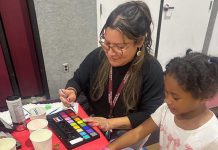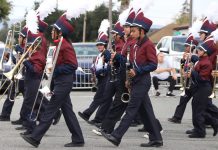In a time when AIDS, date-rape and Paris Hilton all make the
nightly news, the standard
”
birds and the bees
”
talk may seem a little outdated for local parents trying to keep
their teenaged children safe.
Hollister – In a time when AIDS, date-rape and Paris Hilton all make the nightly news, the standard “birds and the bees” talk may seem a little outdated for local parents trying to keep their teenaged children safe.
A recent statewide survey performed by the Public Policy Institute of California found that over 75 percent of Californians support a sex education program for children covering contraceptive options and how to obtain them. And while San Benito County, which once had one of the highest teen birth rates in the state, was left out of the study, local educators believe sex ed programs are essential to the health and well-being of their students.
“There are so many myths out there about sexuality,” said SBHS Superintendent Dr. Jean Burns-Slater, who once taught sex ed herself. “And a good sex education program gives young people the knowledge they need and dispels those myths – and while knowledge doesn’t always change behavior, at least we’re putting it out there.”
According to the PPIC, half of all Californians believe it is appropriate to teach middle- and high school-aged children about where to obtain and how to use contraceptives, and 54 percent advocate teaching both levels how and where to get tested for HIV and other sexually transmitted diseases.
“I think I’m really lucky to teach this subject here,” said Dave Tari, a Health teacher at SBHS. “Because there are a lot of really open-minded people in this community, and my superiors are willing to let me teach the class the way I want to. A lot of teachers don’t get that opportunity with sex ed … I think the community supports what we’re doing, because they can’t necessarily approach their kids themselves.”
While California Education Code once mandated that all public sex-ed programs be centered around abstinence, the language was updated in 2004 to ensure that California teens are taught the correct ways to use FDA approved methods of birth control and their effectiveness.
“The fact is that California has one of the most comprehensive sexuality education programs in the country,” said Katie Desmond, Director of Public Affaires for Planned Parenthood Mar Monte, which serves Hollister. “Studies have shown that decreases those (teen pregnancy) numbers, and over the last 10 years they’ve gone down 60 percent … I believe San Benito County has achieved a high percentage of decreasing teen births, as well.”
Students in San Benito County are given preliminary sex ed lessons in the fifth and seventh grades, to introduce the idea of puberty to students. San Benito High School requires freshman students to undergo a semester-long Health class, four weeks of which is traditionally spent in a sex ed unit.
“We approach it from a human anatomy standpoint,” said Burns-Slater.
The unit covers male and female reproduction, STDs, contraception, self-esteem and smart decision-making. More contentious issues such as abortion and homosexuality are not covered as part of regular course material, but if a student asks, the teacher is obliged to lead a short class discussion on the topic.
“I teach my sex ed unit right after the drugs and alcohol unit at the end of the year,” said Tari. “Because I think there’s a direct correlation, especially in this community.”
One of the biggest challenges to teaching sex ed in San Benito County, says Tari, is fighting a perception among local teens that engaging in sexual activity is a viable alternative to boredom.
“A lot of my students tell me there’s nothing to do in Hollister except drink, get high and have sex. I hear it all the time,” he said. “That’s really frustrating to me. I tell them to look at their GPA, and see if maybe there isn’t something they could be doing to improve that.”
Tari says that, although the course requires that parents sign a permission slip for their child to participate in the class due to the sometimes graphic nature of videos used in the unit, only a small percentage of parents choose to pull their students from the class, often for religious reasons.
“Honestly, I wish there were more parental involvement, I wish we were all on the same page and what kids learned in my classroom was reinforced at home,” said Tari. “It would make my job a lot easier.”
And while most SBHS teens would probably be anywhere but stuck in a classroom listening to a teacher discuss sex, many say the program has left an impression on them.
“I really remember the pictures of all the different STDs,” said Berny San Ramon, who is now a junior. “That whole thing really scared me. I’m afraid of sex now … I see a lot of these tiny girls around town who don’t look like they can support a baby, and I really don’t want to be like them.”
The sex ed curriculum is reviewed at SBHS once every three years. Slater says that in the future she would like to see the Health program expanded, and would like to offer a more in-depth course in Human Sexuality for SBHS seniors.
Neither officials from the Hollister School District or Aromas-San Juan District could be reached for comment.
Danielle Smith covers education for the Free Lance. Reach her at 637-5566, ext. 336 or ds****@***********ws.com.









